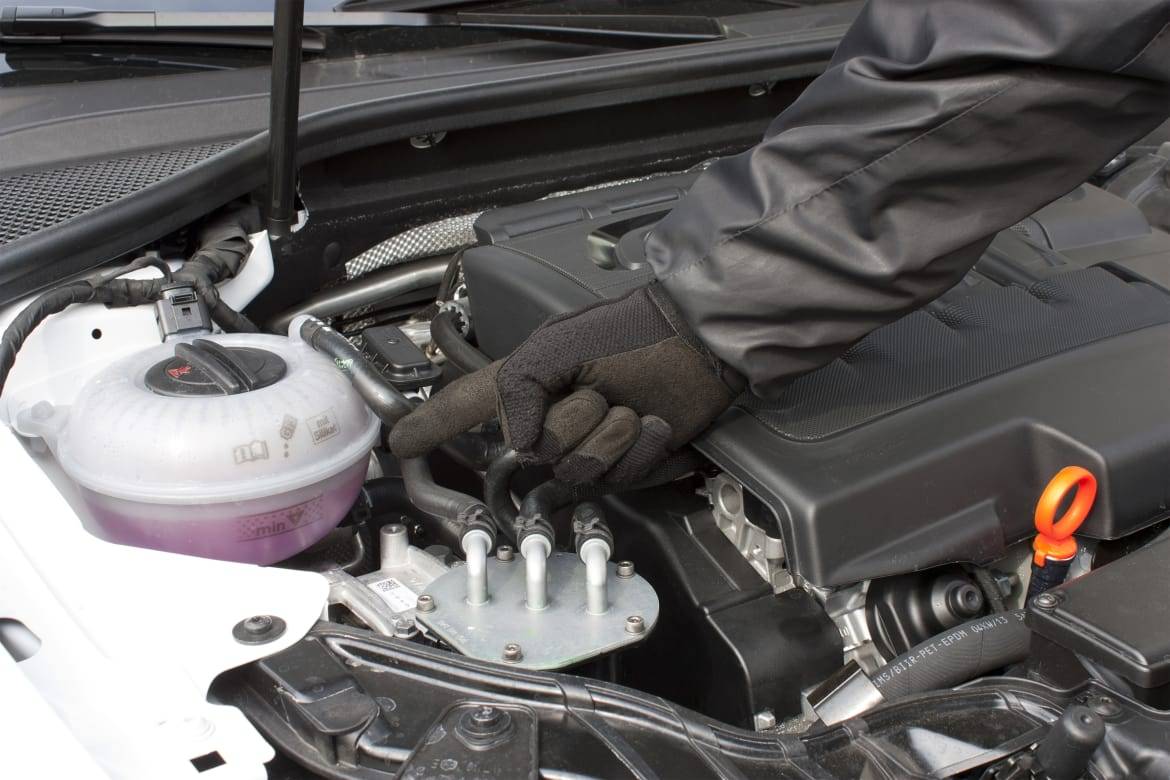What Is a Radiator?


The radiator is a key component of the cooling system whose main responsibility is to cool the mixture of antifreeze and water that circulates throughout the engine.
Related: What Is Coolant and Is It the Same as Antifreeze?
Engines become extremely hot when they’re running, and the antifreeze-water mix, called coolant, absorbs some of that heat as it circulates through passageways inside the engine with the help of the water pump. The coolant operates in a closed, pressurized system where the temperature is usually more than 200 degrees Fahrenheit when the engine is at normal operating temperature.
As the coolant passes through the radiator in the front of the vehicle, cooler outside air flows through the grille to the radiator to lower the coolant temperature before it circulates back into the engine to absorb more heat. A thermostatically controlled electric fan switches on to draw more outside air through the radiator, such as when the car is stopped in traffic on a hot day.
This continuous cycle of coolant circulating from the radiator through hoses to the engine is necessary to prevent the engine from overheating. It also prevents moving parts from warping or fusing together because of excessive heat. A leak in the radiator, hoses or engine — or a broken water pump — can cause considerable damage because there isn’t enough coolant circulating to dissipate the heat.
On some vehicles, the radiator has an internal tank for cooling the automatic transmission fluid, which circulates through a cooler separate from the engine coolant.
Temperature Regulation
Like a radiator in a house that has a hot-water heating system, the radiator in a vehicle is designed to radiate hot air. Car radiators do this with thin metal fins in the core, usually made of aluminum, that allow hot air to escape and cooler outside air to flow through.
Typically, a thermostat near the radiator monitors the temperature to regulate the flow of coolant through the engine. Unlike home heating systems, though, this thermostat does not allow the driver to set the temperature; it opens and closes automatically based on coolant temperature.
A pressure cap on top of the radiator raises the boiling temperature of the coolant. When the coolant expands from heat, a valve on the cap opens to allow some coolant into a recovery tank connected to the radiator by a small hose. When the coolant temperature drops, such as when the engine is off, another valve allows coolant to flow back into the radiator.
Safety Implications
Because coolant temperatures usually are hotter than 200 degrees when the engine is operating and the system is pressurized, the radiator cap should never be removed when the system is hot. Coolant should be added when the engine is cool through the overflow tank, which has markings that indicate if the coolant level is high or low.
More From Cars.com:
- Are Extended Car Warranties Worth It?
- Is Your Check-Engine Light On? 5 of the Most Common Causes
- How Does a Car Defroster Work?
- Find Your Next Car
Cars.com’s Editorial department is your source for automotive news and reviews. In line with Cars.com’s long-standing ethics policy, editors and reviewers don’t accept gifts or free trips from automakers. The Editorial department is independent of Cars.com’s advertising, sales and sponsored content departments.

Contributor Rick Popely has covered the auto industry for decades and hosts a weekly online radio show on TalkZone.com.
Featured stories




